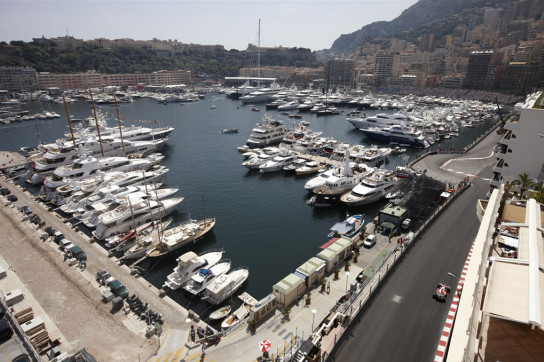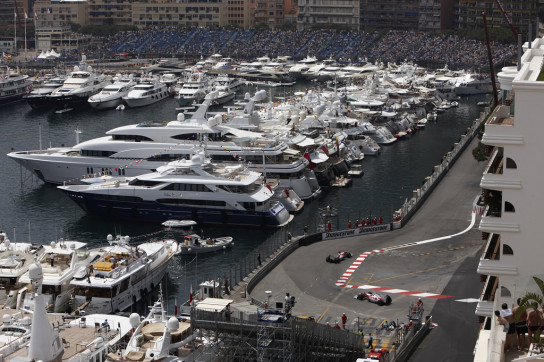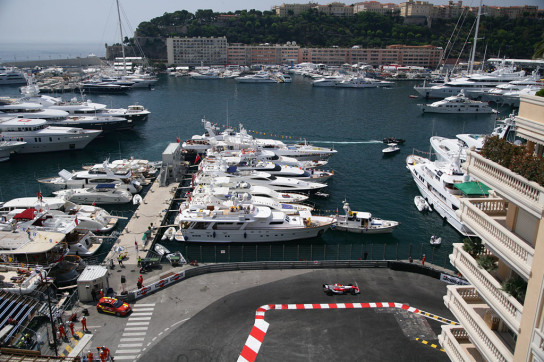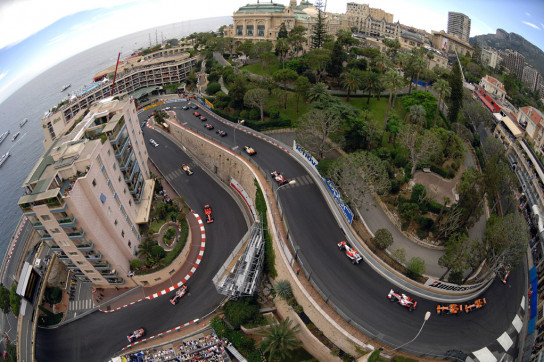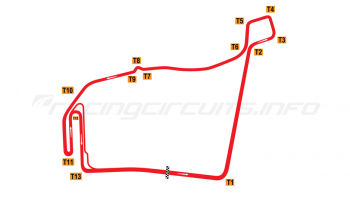Monte Carlo
Circuit Overview
The Monaco Grand Prix is the jewel of the crown of the Formula One schedule, an anachronistic throwback in the modern safety-conscious era which is allowed to continue thanks to the glitz and glamour of both the surroundings and the beautiful people who make it an annual fixture on their social calendars.
Memorably described by Nelson Piquet as "like riding a bicycle around your living room", the street circuit may not always provide the best racing, but it certainly has lots of spectacle.
Aside from Formula One, the circuit's Historic Grand Prix is a popular event, usually run in the weeks ahead of the Formula One race. In recent years this has been joined by the Monaco ePrix, using an adapted variation of the course for the Formula E racers.
Circuit History
Racing has been held on the streets of the principality, around the harbour area of Monte Carlo, since 1929. It was the brainchild of wealthy cigarette manufacturer and Monaco resident Anthony Noghés, who was the General Commissioner of the newly renamed Automobile Club de Monaco (it had previously been a cycling club). Stung by the ACM being refused admission to the international body that represented automotive clubs around the world - on the grounds that it did not hold an event within the principality - Noghés began his planning.
He plotted out a course which went from the Boulevard Albert I, uphill to Casino Square, then back down to Monte Carlo station, turning right at Portier onto the harbour front, emerging through the tunnel on Quai des Etats-Unis, before a left turn onto Quai Albert I, heading towards the gasometer and finally turning back to the starting point.
The proposed course drew favourable comment and support from local racing ace Louis Chiron and, encouraged, Noghés took his plans to Prince Louis II, who immediately saw the advantages it could bring in boosting Monaco's profile across the world, drawing in rich tourists from across the continent in what would otherwise be the off-season.
The date of the first Grand Prix was thus set for 14 April 1929. After 100 laps and almost four hours of racing, the Englishman William Grover Williams (racing under the somewhat transparent pseudonym "Williams") ran out the winner in a Bugatti 35B. Ironically, local hero Chiron was unable to take part, as he was across the ocean racing in the Indianapolis 500.
It was a case of mission accomplished; the race was hailed a success and the ACM got its coveted admission to the automobile federation.
First circuit changes as Grand Prix establishes itself
After further successful events in 1930 and '31, the first changes to the circuit came in time for the 1932 race, held as the season opener for the European Grand Prix season. The tram tracks which had criss-crossed parts of the circuit were torn up and a new, smoother surface laid in their place. The race's popularity grew too - by the mid-30s, up to 100,000 spectators were in regular attendance. The chicane was slightly modified – and slowed – in 1935, with events continuing until the outbreak of war in 1939 forced the cancellation of all racing.
When peace returned, it was Anthony Noghés who once again was the event's champion, once again instrumental in seeing its revival in 1948. There was no race in 1949, due to the death of Price Louis II, but the 1950 event was included as round two of the new Formula One World Championship, being won by Juan Manuel Fangio. The following year, the race was cancelled due to budgetary concerns and because rules for newer faster cars had not yet been drafted.
The 1952 Grand Prix was run with sports cars, as the international regulations had still not yet been finalised. Minor revisions were made to Ste Dévote greeted the drivers but the meeting was overshadowed by tragedy when Luigi Fagioli crashed his Lancia in the tunnel during qualifying, succumbing to his injuries 18 days later.
In 1953 and 1954, the Grand Prix was not held , but from 1955 it regained its place in the World Championship, continuing a run which has been unbroken to the present day. From that event onwards, the start moved next to the waterfront, a few hundred meters before the Gasometer corner. Famously, Alberto Ascari plunged into the harbour when he lost control at the chicane; fortunately race organisers had had the foresight to employ a team of patroling frogmen who soon fished the Italian from the water and later craned his sodden Lancia back onto dry land. The following year the chicane was narrowed to slow the cars, and was further modified in 1957 and 1962.
The start line moved back alongside the pits in 1963, with a new staggered two-by-two grid formation introduced to try and reduce the chances of first corner collisions. Following the fatal crash of Lorenzo Bandini at the chicane in 1967, it was moved 100 meters closer to Tabac, slowing the course by around a second per lap.
Barriers arrive as course is slowly upgraded
For the 1969 event, Armco barriers were placed at specific points for the first time in the circuit's history, with further sections added in the following years. The effect was to increase overall safety but also to narrow the circuit, creating a tunnel like atmosphere. By 1972, the demands of the drivers for further increases in safety and a requirement for the pits to have a permanent barrier separating them for the track led to their temporary repositioning. With no room on the start/finish street for a separate lane, a traffic island to the left of the circuit on Quai des Etast-Unis was employed. Entry to the pits was via the old chicane – a new chicane was inserted just before tabac to slow the cars.
More permanent changes came in 1973. Gone was the old station and tunnel – to be replaced by a modern hotel complex, while land reclaimed from the sea created a circuit extension around a new outdoor swimming pool. A new narrow curve around the Rascasse restaurant replaced the gasometer curve, while the additional space regained from the sea allowed for a permanent pit lane for the first time alongside the start/finish straight.
In 1976, alterations were made at Rascasse and Ste Dévote to slow the cars, while in 1986 the left-right chicane which had increasingly been taken at alarming speed was replaced with a new chicane, closer to the tunnel exit. This again included land reclaimed from the harbour, giving the benefit of space for a small area of run-off. It slowed the cars considerably, though a bump on entry ensured this was still a tricky section of track.
In 1997, the original S-bend around the swimming pool was redesigned, with the barriers moved further back. The new section was named 'Virage Louis Chiron' in honour of the 1931 GP victor and long-time clerk of the course.
Land reclaimed from the sea
The next phase of new work only affected the southern side of the port. Some 5,000 square metres of land were reclaimed from the sea. The circuit between the second part of the swimming pool section and La Rascasse was moved 10 metres and completely redesigned for the 2003 race. The S-bends at the exit of the swimming pool section were tightened into a slower right-left chicane. The following year saw the opening of a new, much wider pit lane with by building over the old track between the swimming pool and La Rascasse. This provided 250 square metres of extra pits space for the teams – though they still remain amongst the most cramped on the F1 calendar!
Small changes were made to the Tabac corner for 2015, where the track was moved 2.5 metres closer to the harbour, forcing a slightly earlier turn in. The realignment continues up to the Swimming Pool complex, slightly changing the entry apex to this section. The changes come in the wake of the 2013 crash involving Pastor Maldonado and Max Chilton, in which a section of TecPro barrier was dislodged, blocking the track and forcing the race to be stopped.
A new innovation for 2015 was the debut of the FIA Formula E Championship on a shortened version of the Grand Prix course. Instead of heading up the hill after Sainte Devote, the electric racers turn sharp right along Avenue J.F. Kennedy, heading back towards the Nouvelle Chicane, which effectively becomes a squared-off hairpin. The remainder of the lap is the same as the Grand Prix course. The ePrix takes place two weeks before the Formula One circus rolls into town for its traditional event.
The Coronavirus pandemic caused the cancellation of the race for 2020 but it has returned in 2021 with the historic race, Formula E event and Formula One races. Plans for Formula E to use a faster Ste Dévote corner (similar to the pre-1976 version) were initially announced, though issues with the location of the pit lane exit placement and the need to generate more braking for energy recovery led to the abandonment of this plan. Instead, the full Grand Prix circuit was used for the electric racers for the first time, albeit with the second half of the chicane being tightened considerably, cutting inside the apex of the normal turn.
Jump onboard
Circuit info
- Circuit de Monaco, Automobile-Club de Monaco, 23 Blvd Albert 1er, 98000, Monaco
- +377 93 15 26 00
- Email the circuit
- Official website
Rate This Circuit
Votes: 6033
Gallery
The latest images from Monte Carlo.
Plan a visit
Get your race tickets!
Brought to you with: 
We've teamed up with Motorsports Tickets to bring you the best deals for Formula One, MotoGP, Le Mans and more.















